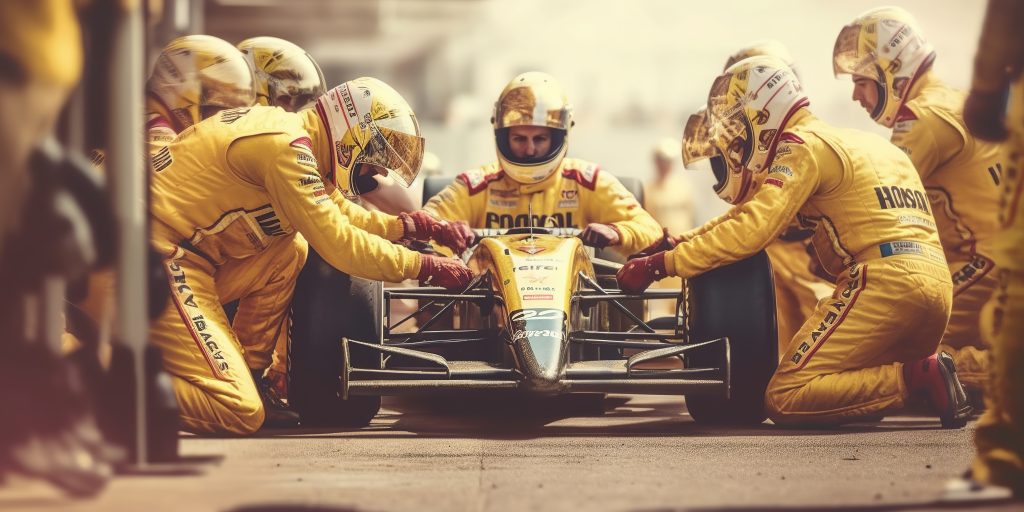The exhilarating speed, the precision maneuvers, the split-second decisions – car racing is a thrilling and demanding sport that pushes its participants to their limits. But what exactly makes it so hard? Strap in as we explore the physical and mental challenges, the training and conditioning required, and the unique obstacles that drivers face both on and off the track. From the intricacies of Formula 1 to the high-speed intensity of NASCAR, the world of car racing is a captivating realm that requires a combination of skill, endurance, and unwavering determination.
Formula 1 Racing Challenges
Formula 1 racing presents a multitude of challenges that push drivers to their limits. One of the key challenges in Formula 1 is the physical stamina required to compete at the highest level. Drivers like Lewis Hamilton need to be in peak physical condition to handle the G-forces, high temperatures, and sustained heart rate experienced during races. The metabolic demands of car racing are similar to other high-intensity sports like basketball and soccer. Drivers rely on their cardiovascular fitness to power their muscles and regulate body temperature. The extreme heat in races like the one in Chicago adds another layer of difficulty, as drivers must endure the physical strain for two hours or longer. It takes a combination of physical strength, endurance, and mental fortitude to perform at the highest level in Formula 1. Additionally, mechanical knowledge is crucial for racecar drivers. They need to understand the intricacies of their vehicles and efficiently use the thousands of parts that make up a racecar. This knowledge allows them to perform preventative maintenance, make adjustments on the fly, and adapt to changing conditions on the track. In Formula 1, it is not just about driving fast, but also about having the mechanical knowledge to optimize the performance of the racecar.
NASCAR Racing Demands
NASCAR Racing presents unique challenges that test the physical and mental limits of drivers. To excel in this high-octane sport, NASCAR drivers must employ effective strategies, maintain peak fitness levels, utilize race tactics, optimize their car setup, and prioritize proper nutrition.
NASCAR racing strategies play a crucial role in achieving success on the track. Drivers must make split-second decisions, constantly analyzing the race conditions and adapting their approach accordingly. They strategically position themselves to take advantage of the draft, a technique that reduces air resistance and increases speed. Additionally, drivers must master the art of drafting and blocking, maneuvering their cars to maintain optimal positions and prevent competitors from overtaking.
NASCAR driver fitness is paramount to endure the physical demands of the sport. These athletes undergo rigorous training regimens to strengthen their neck, upper body, and legs, enabling them to handle the intense G-forces experienced during fast turns and abrupt braking. Cardiovascular fitness is also crucial for endurance, as races can last for several hours.
Race tactics involve a combination of skill and strategy. Drivers must carefully manage their tires and fuel consumption, making calculated decisions on when to pit for fresh tires and fuel. They must also stay mentally focused and avoid costly mistakes that can jeopardize their position in the race.
NASCAR car setup is another critical aspect of the sport. Drivers work closely with their team to fine-tune their vehicles, adjusting factors such as suspension, aerodynamics, and tire pressure to optimize performance. The right car setup can give drivers a competitive edge on the track.
Proper nutrition is essential for NASCAR drivers to maintain their energy levels throughout a race. They carefully plan their meals to ensure they consume the right balance of carbohydrates, proteins, and fats. Hydration is also crucial, as drivers can lose significant amounts of fluids through sweat during races.
Difficulties in Touring Car Racing
Touring car racing presents its own set of challenges that require drivers to possess exceptional skills and endurance. Endurance races are a key component of touring car racing, with races lasting for hours on end. The physical and mental stamina required to maintain focus and concentration throughout these long races is immense. Additionally, touring car racing involves using street legal cars, which adds another layer of difficulty. These cars are not specifically designed for racing, so drivers must adapt their driving techniques to handle the demands of the track.
In addition to endurance races, touring car racing also includes sprint races, which are shorter and more intense. These races require drivers to push their limits and make split-second decisions to maneuver through the field. The importance of safety cannot be overstated in touring car racing. The high speeds and close proximity of the cars on the track create a significant risk factor. Drivers must constantly be aware of their surroundings and make calculated moves to avoid accidents.
Challenges in Rally Racing
Rally racing, known as one of the most challenging races in the world, demands exceptional skill, focus, and teamwork. The terrain in rally racing can vary greatly, from gravel and dirt to snow and ice. This means that rally drivers need to quickly adapt to different conditions and surfaces, constantly adjusting their driving techniques. One of the key challenges in rally racing is the partnership between the driver and their co-driver. The co-driver plays a crucial role in navigating and providing instructions to the driver, relying heavily on their memory and communication skills. Rally racing also involves navigating steep hills and unpredictable turns, which require precise control and quick decision-making. Patience is a virtue in rally racing, as drivers must remain calm and composed even in the face of challenging situations. Successful rally drivers understand the importance of pace, knowing when to push the limits and when to exercise caution. With its diverse terrain, demanding hills, and the need for patience and memory, rally racing truly tests the limits of both driver and machine.
Complexities of Sports Car Racing
As we shift our focus from the challenges of rally racing, let’s now explore the complexities of sports car racing, a thrilling and demanding discipline that presents unique obstacles for drivers to overcome. Sports car racing requires exceptional vehicle handling skills, as drivers maneuver powerful and high-performance supercars. Unlike purpose-built race cars, these supercars are not designed specifically for racing, which adds an extra layer of difficulty. The unpredictable conditions on the race track further test the driver’s abilities, requiring them to adapt quickly to changes in grip, weather, and track conditions.
The mental aspect of sports car racing is also crucial. Drivers must maintain intense focus and concentration throughout the race, as split-second decisions can make the difference between victory and defeat. The physical demands of racing cannot be underestimated either. The forces experienced during fast turns and abrupt braking generate significant G-forces, causing muscle fatigue and challenging the driver’s ability to maintain precise control of the car.
Precision and skill are paramount in sports car racing. Maneuvering these supercars at high speeds, threading through tight corners, and executing overtakes requires expert control and finesse. Every movement must be calculated and precise to avoid costly mistakes.
Safety considerations also play a significant role in sports car racing. Unlike other forms of racing, sports car racing utilizes street-legal supercars, which means that drivers must navigate the track while complying with the regulations and limitations of these vehicles. This adds an additional layer of complexity, as drivers must balance speed and performance with the need to operate within the constraints of the law.
Physical Demands of Race Car Driving
Driving a race car requires greater physical effort compared to driving a regular car, as you engage muscles in your arms, upper body, and legs to control the vehicle at high speeds. The physical demands of race car driving are intense and require specific abilities to excel in this sport. Here are some key factors that contribute to the physical demands of race car driving:
- Muscle fatigue: The constant strain on muscles during races can lead to fatigue, especially in the arms, upper body, and legs.
- Cardiovascular endurance: Race car drivers need to have excellent cardiovascular fitness to endure the long races and maintain focus.
- Hand-eye coordination: Precise control of the vehicle requires exceptional hand-eye coordination to make split-second decisions and maneuvers.
- Reaction time: Quick reflexes are crucial in race car driving to respond to unexpected situations and make rapid adjustments.
- Heat management: The intense heat inside the cockpit, combined with the fireproof safety gear worn by drivers, poses a significant challenge in managing body temperature and preventing dehydration.
To meet these physical demands, race car drivers undergo rigorous training and conditioning programs. They focus on strengthening key muscle groups, improving cardiovascular fitness, enhancing hand-eye coordination and reaction time, and preparing for the intense heat experienced during races. By prioritizing physical fitness and mastering these skills, race car drivers can better cope with the physical demands of their sport.
Training and Conditioning for Drivers
To meet the physical demands of race car driving, drivers undergo rigorous training and conditioning programs to strengthen key muscle groups, improve cardiovascular fitness, and enhance their hand-eye coordination and reaction time. Strength training is an essential component of their training regimen. Drivers focus on exercises that target the neck, upper body, and legs to cope with the physical demands of controlling the vehicle. Endurance workouts are also crucial to enhance cardiovascular fitness and improve their ability to endure the intense physical exertion during races.
In addition to strength and endurance training, race car drivers also work on improving their hand-eye coordination and reaction time. These skills are vital for making split-second decisions and reacting quickly to the ever-changing conditions on the track. Various exercises and drills are incorporated into their training to sharpen these skills and ensure optimal performance behind the wheel.
Heat and Safety Gear in Auto Racing
After completing their rigorous training and conditioning programs, race car drivers must also prepare themselves for the challenges of heat and the importance of safety gear in the high-intensity world of auto racing. The impact of heat on driver performance is significant, as it can lead to decreased focus, reduced reaction time, and increased fatigue. That’s why the importance of safety gear in auto racing cannot be overstated. The gear, which includes fireproof undershirts, fire suits, gloves, balaclavas, and full-face helmets, is crucial for protecting drivers from the potential dangers of racing. However, these safety measures also pose challenges in managing heat and staying cool in the cockpit. Drivers have to employ strategies such as hydration, ventilation systems, and cooling suits to combat the effects of heat on driver hydration and endurance. Innovations in safety gear, such as lightweight and breathable materials, cooling channels, and moisture-wicking fabrics, have been developed to improve driver comfort and protection. By prioritizing safety gear and implementing effective heat management strategies, race car drivers can maintain their performance and stay cool under the intense conditions of auto racing.

